

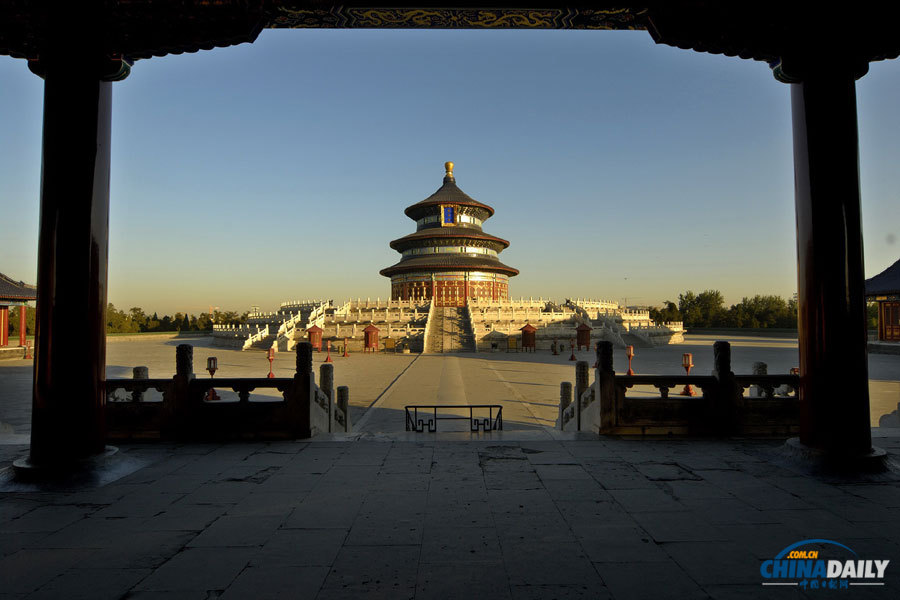 |
|
The Hall of Prayer for Good Harvests is the main building of the Temple of Heaven. As its name suggests, it is where emperors of Ming and Qing dynasty prayed for harvests. [Photo by Jia Yue for Chinadaily.com.cn] |
The Temple of Heaven, or the Altar of Heaven, was founded in 1420 during the reign of Mingle Emperor of Ming dynasty. The building complex was used by the emperors of the Ming and Qing dynasties as a place to offer sacrifice to God and pray for good harvests.
Covering an area of 273 hectares, the Temple of Heaven is the biggest and the most complete existing imperial sacrificial building complex in the world. The Temple of Heaven was inscribed as a UNESCO World Heritage Site in 1998 and was described as “a masterpiece of architecture and landscape design which simply and graphically illustrates a cosmogony of great importance for the evolution of one of the world’s great civilizations”.
About the photographer:
Jia Yue, 36, who got a bachelor's degree in engineering from Tsinghua University in 2000 and later a master's degree in film studies from Beijing Film Academy in 2005, is now working with Tsinghua university's cultural heritage protection research institute. He is also a lecturer in the school of Photography of Beijing Film Academy.
From 2005 to 2012, Jia organized and completed the systematic visual recording works for dozens of cultural heritage sites, trying to introduce the concept of documentary photography into the cultural heritage protection system and to further explain the value of heritage through visual works.
The relationship between heritage, nature and human beings has been Jia’s focal point. The combination of photographic language and historical perspectives is regarded important, which unifies Jia’s dual roles as both a photographer and a heritage conservator. What Jia wants to achieve through his shooting is that the historical value carried by the cultural heritage can be felt and absorbed at the highest level.
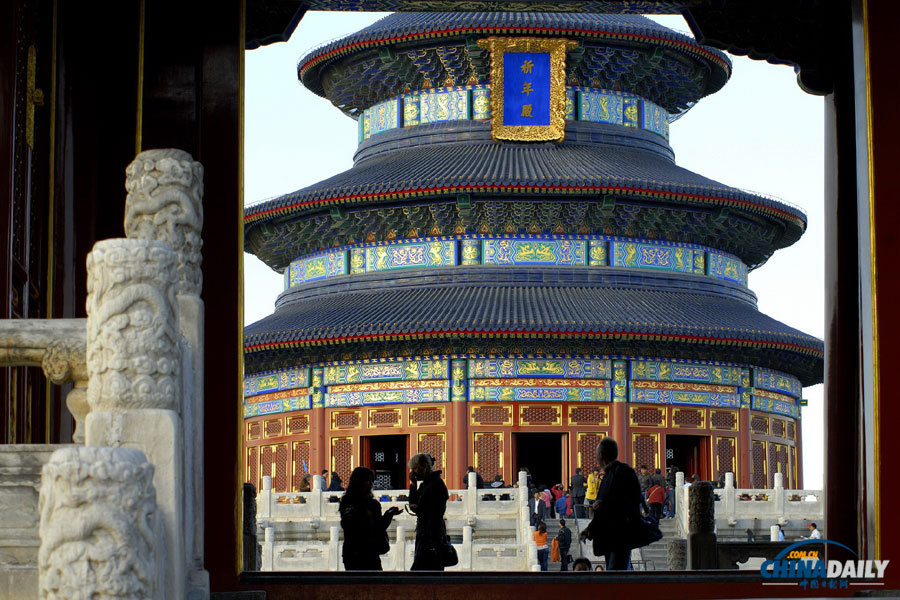 |
|
The Hall of Prayer for Good Harvests is circular, resonating to the ancient Chinese notion that heaven is circular, the blue color of the roof tiles sybolizes blue sky. [Photo by Jia Yue for Chinadaily.com.cn] |
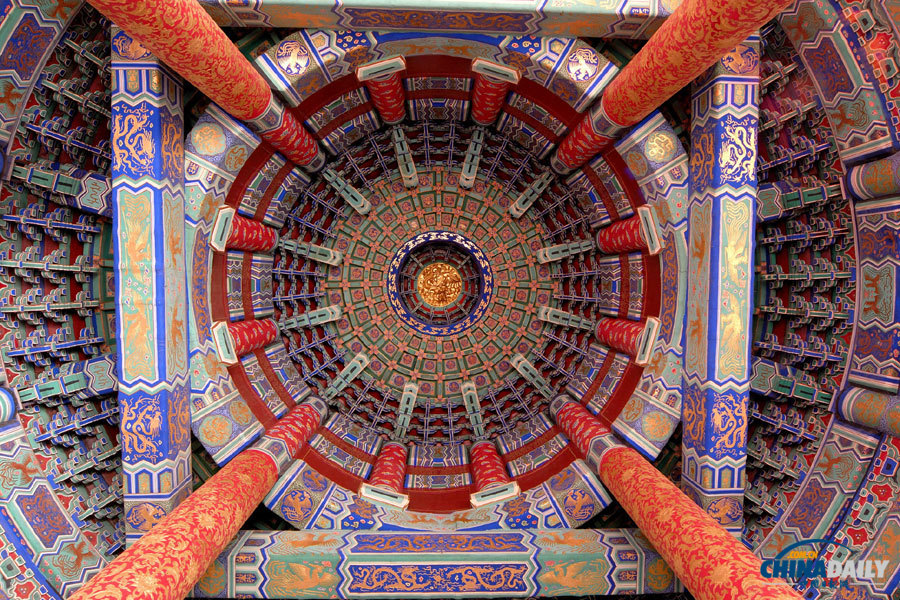 |
|
The Hall of Prayer for Good Harvests has four big pillars, twelve shorter pillars in the central area, and twelve outer pillars, representing the four seasons, twelve months and a day's twelve hours respectively. [Photo by Jia Yue for Chinadaily.com.cn] |
 |
|
The interior of The Hall of Prayer for Good Harvests is richly decorated.[Photo by Jia Yue for Chinadaily.com.cn] |
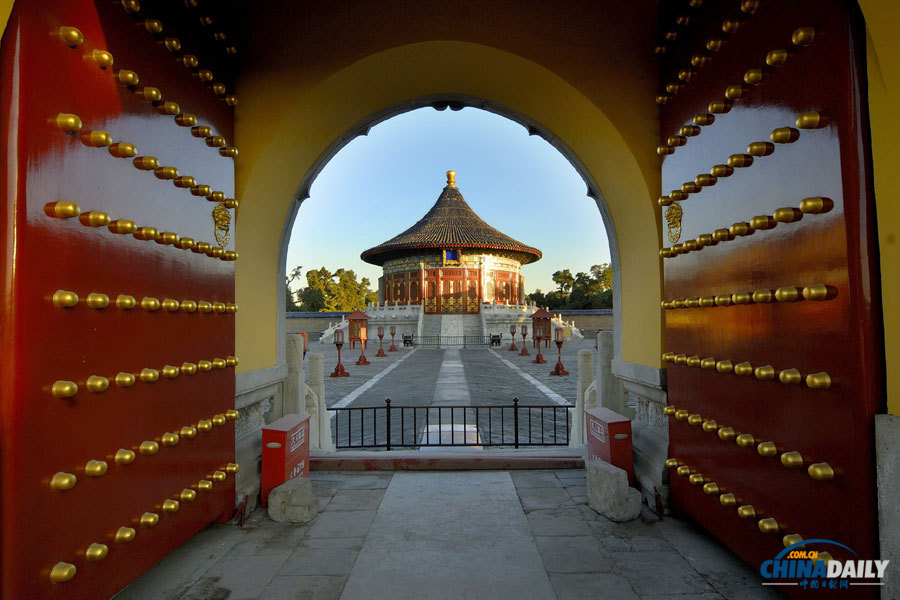 |
|
Located to the south of the Hall of Prayer for Good Harvests, the Imperial Vault of Heaven is also a circular building. It is surrounded by a smooth circular wall, known as the Echo Wall, which is famous for its amazing sound transmitting effects.The Imperial Vault is connected to the Hall of Prayer by an elevated 360 meter long brick path, named the Red Stairway Bridge. [Photo by Jia Yue for Chinadaily.com.cn] |
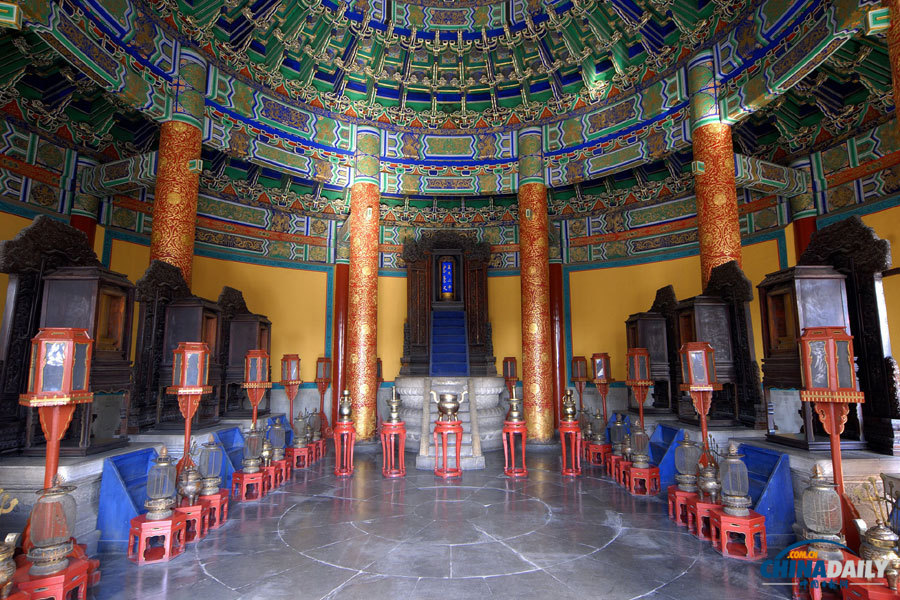 |
|
Located to the south of the Hall of Prayer for Good Harvests, the Imperial Vault of Heaven is also a circular building. It is surrounded by a smooth circular wall, known as the Echo Wall, which is famous for its amazing sound transmitting effects.The Imperial Vault is connected to the Hall of Prayer by an elevated 360 meter long brick path, named the Red Stairway Bridge.[Photo by Jia Yue for Chinadaily.com.cn] |
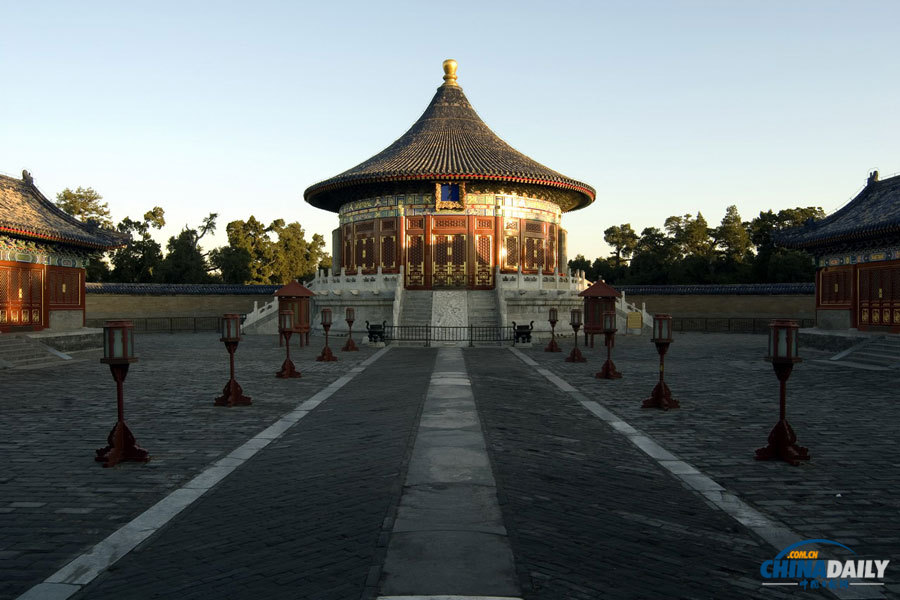 |
|
Located to the south of the Hall of Prayer for Good Harvests, the Imperial Vault of Heaven is also a circular building. It is surrounded by a smooth circular wall, known as the Echo Wall, which is famous for its amazing sound transmitting effects.The Imperial Vault is connected to the Hall of Prayer by an elevated 360 meter long brick path, named the Red Stairway Bridge.[Photo by Jia Yue for Chinadaily.com.cn] |
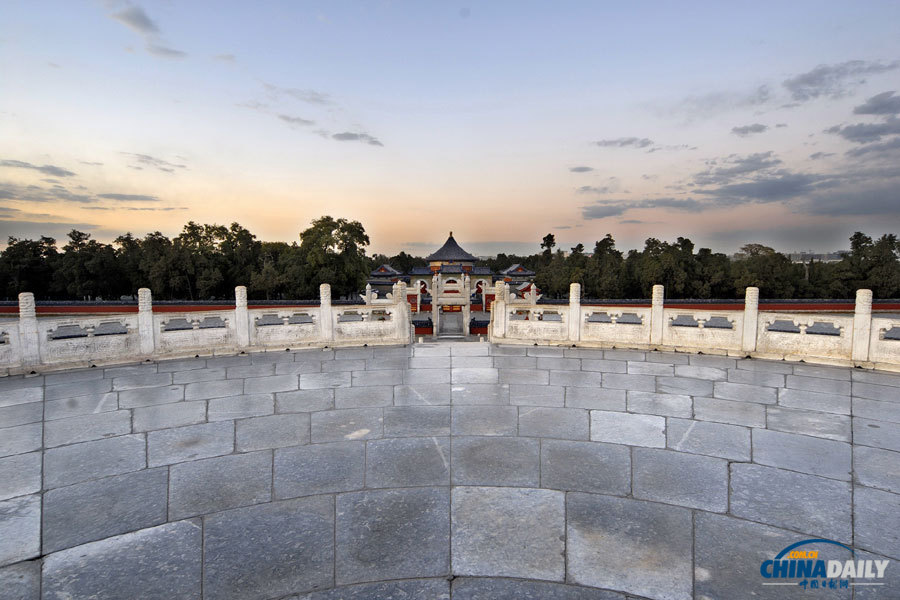 |
|
Located to the south of the Imperial Vault of Heaven, the Circular Mound Altar is a circular platform to offer sacrifice to heaven. It consists of three circular platforms of white marble, decreasing in diameter.There are 360 pillars in the balustrades, representing the 360 days of the ancient Chinese lunar year. The numbers of various elements of the Altar, including its balusters and steps, are either the sacred number nine or its nonuples.The imperial throne is supposed to be set up in the centre of the uppermost platform, symbolizing the role of the Emperor as the Son of Heaven and hence the mediator between Heaven and Earth. [Photo by Jia Yue for Chinadaily.com.cn] |
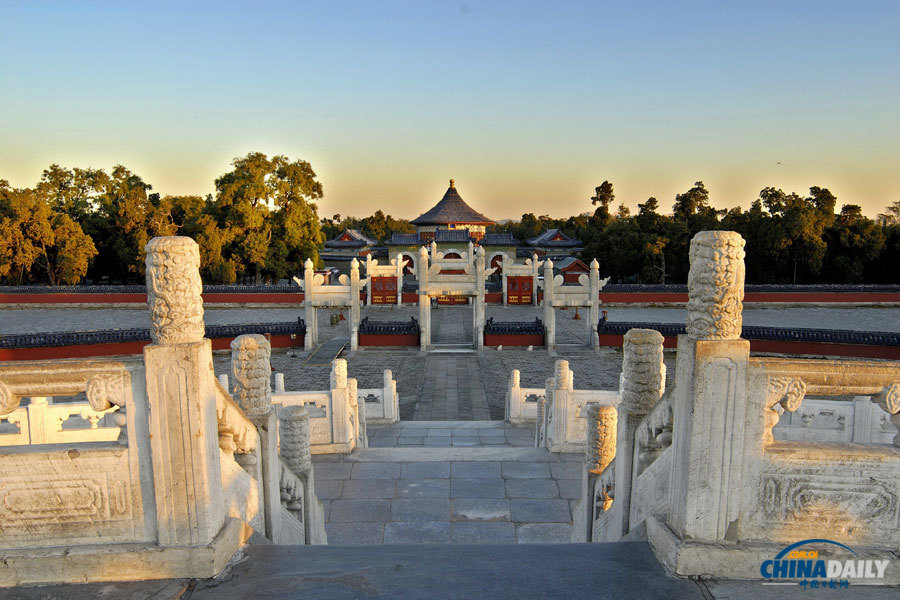 |
|
Located to the south of the Imperial Vault of Heaven, the Circular Mound Altar is a circular platform to offer sacrifice to heaven. It consists of three circular platforms of white marble, decreasing in diameter.There are 360 pillars in the balustrades, representing the 360 days of the ancient Chinese lunar year. The numbers of various elements of the Altar, including its balusters and steps, are either the sacred number nine or its nonuples.The imperial throne is supposed to be set up in the centre of the uppermost platform, symbolizing the role of the Emperor as the Son of Heaven and hence the mediator between Heaven and Earth. [Photo by Jia Yue for Chinadaily.com.cn] |
 |
|
The Temple of Heaven has two enclosures, the southernmost enclosure is square, signifying the Earth, while the northernmost one is semi-circular,signifyng the Heaven. The design symbolizes the ancient Chinese belief that Heaven is round and the Earth square.[Photo by Jia Yue for Chinadaily.com.cn] |
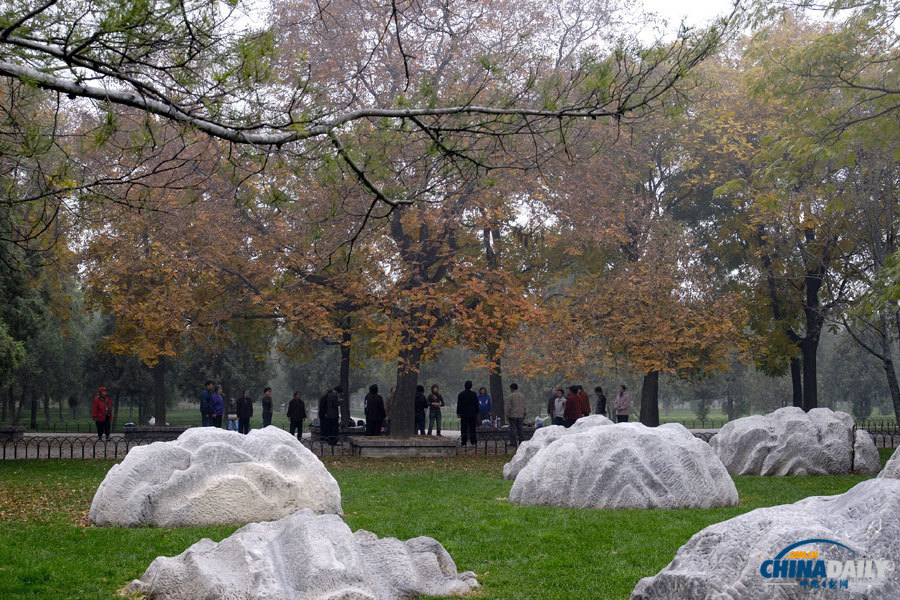 |
|
The Seven-Star Stone Group, east of the Hall of Prayer for Good Harvest, represents the seven peaks of Taishan Mountain, a place of Heaven worship in ancient China.[Photo by Jia Yue for Chinadaily.com.cn] |
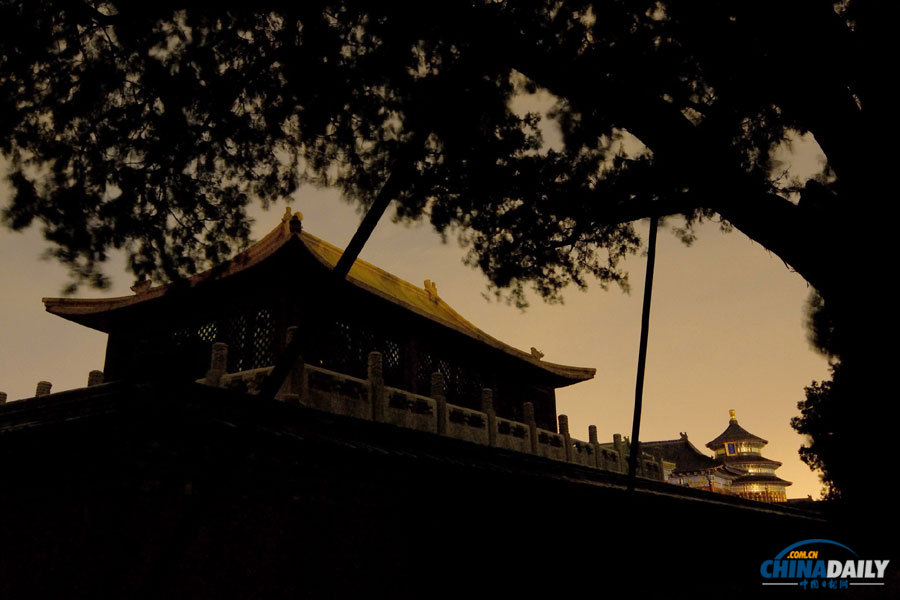 |
|
Night scene of the Temple of Heaven. [Photo by Jia Yue for Chinadaily.com.cn] |
Related stories:
Foreign tourists visit Temple of Heaven in Beijing
South Putuo Temple in China's Fujian
Buddhist temple seeks to preserve on-site buildings
Artifact recovered for China's oldest Taoist temple
GEF helps conserve China's World Heritage mountain
Beijing wants to have a bite of heritage list
|
|
|